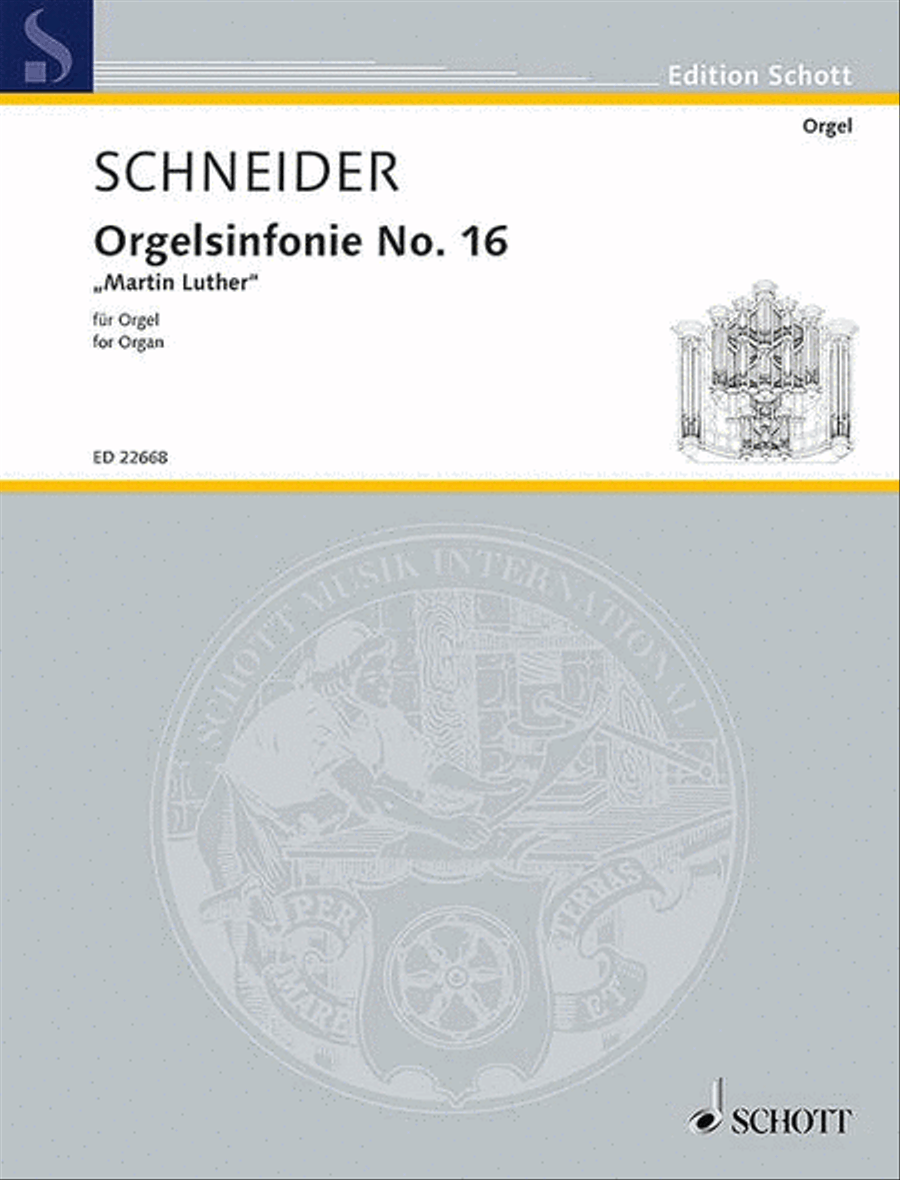Organ - advanced - Digital Download SKU: S9.Q45183 Martin Luther. Composed by Enjott Schneider. This edition: Sheet music. Downloadable. Duration 24 minutes. Schott Music - Digital #Q45183. Published by Schott Music - Digital (S9.Q45183). On the occasion of the quincentenary of Reformation Day in 2017, the composer Enjott Schneider thoroughly studied Martin Luther the individual and all his contradictions. The result is a brilliant, demanding organ symphony which is perfect for concerts on the subject of Reformation and Martin Luther. The composer describes the five movements of the symphony as follows: '1st movement: Wir glauben all an einen Gott with its quintuplet-like beginning is very Gregorian in style, outlining the range of Lutheran emotionalism between the Middle Ages and the modern era. The irrationality of faith ultimately has priority over any thought and evidence. At the beginning of the movement, sounds of knocking on wood remind of the nailing of the Ninety-Five Theses to the doors of churches in Wittenberg. The chorale melody sometimes hides with an almost rough medieval saltarello, referring to Luther's robustness and vitality with which he knew to carry away even common people. 2nd movement: In 1530, the electoral prince of Saxony presented to Luther at Coburg Castle the golden signet ring with the Luther rose which became the symbol of his theology of grace. A white heart with black cross is fixed on a five-petalled rose. To him, white is the colour of angels and ghosts, black stands for the pain of crucification: The just shall live by faith, but by faith in the Crucified. But the fact that the rose and the heart are the dominating symbols shows how Catholic Marian piety remained an ingredient of Luther's spirituality throughout his life. In line with the dominant five-petal structure of the rose, this movement was composed, to a large extent, in accordance with the floating, lyrical rhythm in 5/8 time. 3rd movement: The omnipresence of death and dying – from the plague and war to the never-ending dangers of daily life – was an essential part of the world view of that time. Fears ensued that might heighten into the grotesque, e.g. in the pictures of Hieronymus Bosch. The Danse macabre was a popular motif in those years. Luther's chorale Mitten wir im Leben sind / mit dem Tod umfangen from 1524 (Enchiridion from Erfurt) is based on the Gregorian chant Media vita in morte sumus created in France around 750 and, with its idea of transience, inspired a simplistic air. 4th movement: The famous confession delivered at the Diet of Worms in 1521, I stand here and can say no more. God help me. Amen, are not Luther's words but the version later used as text for a pamphlet. However, it represents quite plainly the straightforwardness and inevitability of his mission. Musically, it was made into a perpetuum mobile, i.e. a dogged, ostinato and never-ending musical air. 5th movement: The Mighty Fortress, on the other hand, is one of the great symbols of Martin Luther which, with its shining C major key, embodies the Protestant ideology and willful nature of the Reformation unlike any other song. Heinrich Heine called it the Marseille anthem of the Reformation, Friedrich Engels the Marseillaise of the Peasants' Wars. This disputability is not thought through to the end but rather interrupted: With a jubilant birdcall version of the melody, the finale shows a rather chamber-music-like side of the ideals of freedom of Christians.'.
